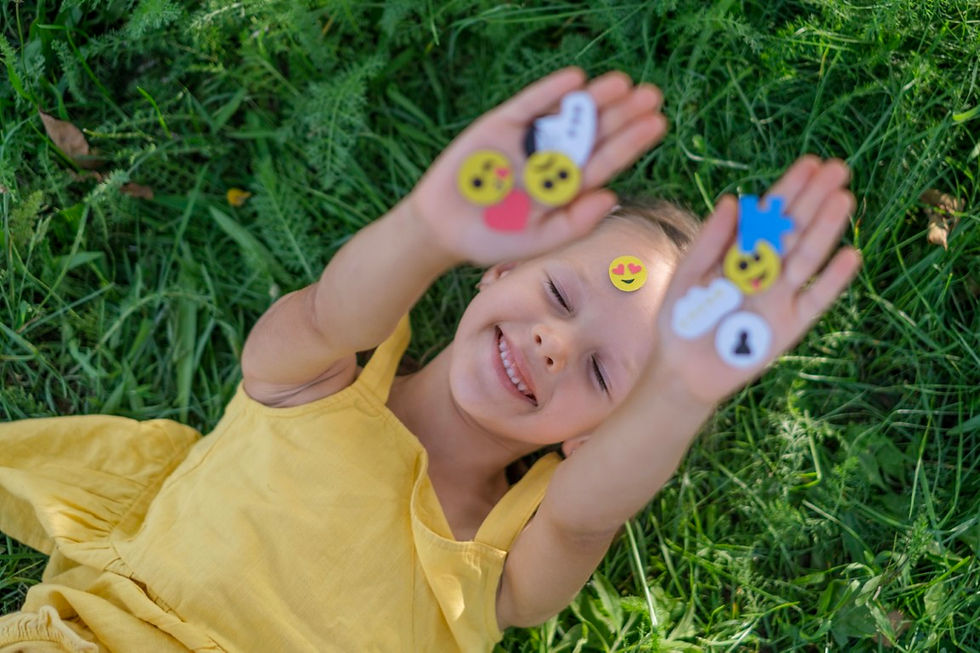Is Your Child Anxious? A Checklist & What You Need to Know
- Sonja Friedlan

- Nov 18, 2022
- 4 min read
Updated: Sep 5

Do you find your child is a little more clingy than normal? Are they refusing to go to school? Have they been having mood swings?
Childhood anxiety is actually more common than you might realize. Everyone, children, adults, and even pets experience anxious feelings during their lives. All the same, it's worth addressing because children are still learning about big feelings without having the right words to describe them.
If you suspect your child is going through these anxious feelings, we have a checklist and some tools that can help you and your little one.
Keep in mind, if your child experiences one of these listed symptoms, it doesn't necessarily mean they have a specific anxiety disorder. It's a good idea to talk with your family doctor and meanwhile pay special attention to your child’s anxiety symptoms. Are they impacting their daily life, or the whole family?
Children Experience Anxiety Differently
It's easy to tell if a child is anxious when they cry and cling, but it's hard to recognize and distinguish serious anxiety from a temporary bad mood, pain, development, or outside social stresses.
Every child is different and processes things differently, and every situation that can create anxiety is different too.
The major feelings that define anxiety are identical in children and adults both:
Constant and unreasoned fear,
Feelings of loneliness,
Sadness,
Feeling of lack of power, and
Connected physical pains, such as headaches and stomachaches.
This is why you need to ask your child how they’re feeling. If they won’t use their words, tell them to draw or dance or sing or be creative. If they’re keeping their anxiety bottled up inside because they’re scared, it will take them more time to express it.
A Checklist of Phrases That Can Be Code Words For “I’m Anxious”
“My tummy hurts.” “I feel like throwing up.” Anxious feelings can present themselves as physical symptoms, and when we have anxiety attacks we sometimes get nauseous.
“Can I stay home?” “I don’t want to!” This is when a child wants to avoid stressful situations, whether at home or outside of it.
“I’m not hungry.” Anxiety can make a child feel less hungry, too.
“Please don’t leave me.” “I want to go home.” Stressful environments or situations cause any child with anxiety to want to get away from the stress.
“I feel like there’s something wrong with me.” Self-doubt is very common. As the saying goes, "We are our own worst critic." It's true for children too.
“I can’t do it!” “Can you do it for me?” Avoidance of difficult tasks means avoiding mistakes, but it also means a child's avoiding the chance to grow and learn from mistakes.
“I’m sorry.” Apologizing often, and for small things, is common anxious behaviour.
“Are you mad at me?” An anxious child often seeks continuous approval or assurance from other people.
“I can’t fall asleep.” Difficulties falling asleep can impact the whole family.
“I’m so tired.” Again, this means difficulties falling asleep or getting restful sleep. It may be the only sign a tired child is able to express.
“But what if..? What if..?” Consistent worrying, sometimes about things far in the future, is something children and adults both do.
“No one wants to play with me.” “I have no friends.” This can mean an intense fear of social situations or loneliness.
“Are you sure..?” “Do you think..?” An anxious child asks lots of questions to get reassurance about their fears.
How to Help Your Child Manage their Anxious Feelings
If you yourself are feeling helpless and even anxious about what to do for your child if they're anxious, it's okay. There are things you can do to help them (and you too!) learn to manage their new, big, anxious feelings.
Don’t avoid what your child fears. Avoidance as a coping mechanism only reinforces anxiety and worsens it over time. By working with a therapist, together you can come up with a solution that works for all of you to help your child face and deal with their fear in a safe, healthy way.
Offer comfort and demonstrate positive responses. Listen to your child’s concerns while being careful to not reinforce their fears. Help them practice relaxation techniques while demonstrating appropriate, non-fearful responses to the trigger (or source) of your child’s anxiety.
Validate their fears and feelings of anxiety. Use a soft tone of voice, bring yourself to their level (kneel down, or bring them onto your lap in a cuddle), and make sure they know they feel heard. You can tell them things like, “I know these are scary feelings” and “It’s okay to feel this way”.
Look for the physical signs. Headache, stomachache, vomiting, rapid heartbeat, clammy, tears, and not being able to articulate what is happening are all big signs. Be with your child in the moment. Make sure they're near a garbage can or toilet in case they throw up. Be as soothing as you can be. This is where those breathing techniques come in handy.
We hope that for you and your family that this is a good start to helping your child. Feel free to explore even more tools we have to offer, such as our article on flexibility for anxiety.







Comments